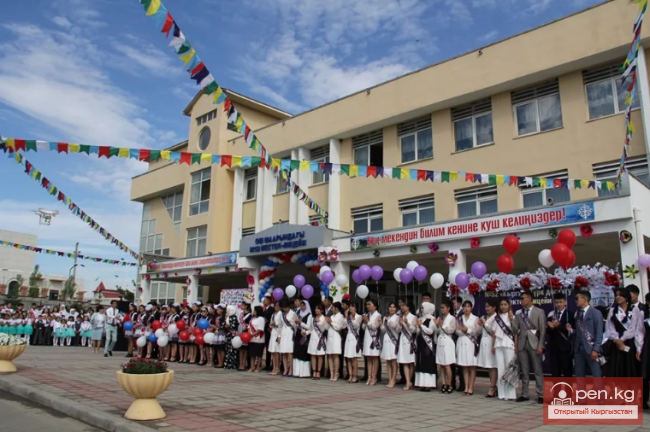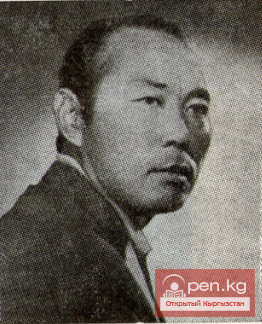
According to the census data, significant changes occurred in the distribution of the employed...

At the III Congress of Architects of Kyrgyzstan (1954), the issue of training personnel from the...

Over the past 15 years, the system of general secondary education has functioned quite steadily,...

Since 1998, the reduction in the number of preschool institutions has been halted, and a...
The event "International Cooperation in the Field of Distance Education" took place on...

Today, the issues of accessibility and quality of education are at the heart of educational...

Before the revolution, there were 107 Russian schools in Kyrgyzstan, where, in addition to Russian...
This video highlights approaches to teaching and learning that will be more flexible to meet the...

Education. By the time Soviet power was established in Kyrgyzstan, its population was completely...

Licensing and accreditation of higher education institutions. For several years now, a...

Akbaraly Kabaev, foreman of builders at JSC "Narynhydroenergoстрой" Born in Jalal-Abad...
Ulukbek Immatovich Zheemuratov has been appointed as the deputy head of the Leilek District State...

Guided by the principles of creating a unified educational space with neighboring countries,...

The Final Formation of the Kyrgyz ASSR In January 1929, based on the recommendation of the city...

Sadykova Ainagul Painter. Honored Worker of Culture of the Kyrgyz Republic. Born on March 8, 1942,...

Primary Education in the City of Osh The city of Osh is not only a hub of industry but also a...

We do not have data on the development of science and education among the nomadic peoples of...

The number of higher educational institutions in the republic has increased more than fourfold...

Mikhail Yurievich Yakovlev Editor. Member of the Communist Party of the Soviet Union since 1961....

It is known that in the 18th century, the Kyrgyz, although rarely, used a new writing system, as...

Prose writer A. Aitbaeva was born in 1917 and passed away on June 27, 1975, in the village of...

Baytur Anvar (1938-1991), a prominent scholar and historian of modern Kyrgyz people. He was born...
From October 29 to 31, 2025, an exhibition of Russian universities titled "Education in Russia...

The global study was conducted by the European Scientific and Industrial Chamber with a grant from...

Methods of Immigration to Germany To immigrate to Germany, one must prepare for bureaucratic red...

Petition of Kyrgyz Deputies for the Creation of National Statehood After losing their statehood in...

Idinov Kubanychbek (1949), Doctor of Economic Sciences (1993) Kyrgyz. Born in the village of...

Karypkulov Amanbek Karypkulovich (1939), Doctor of Philosophy (1983), Professor (1993),...

Akmatov Adylbek Kambarovich Candidate of Technical Sciences, Corresponding Member of the...

At the beginning of the 2004/05 academic year, the number of teaching staff in secondary...

In the photo: Second graders of the "Olymp" primary school in Osh during a Russian...

For economic or social reasons, the number of early marriages in Kyrgyzstan remains high....

The Karakhanid period, as the apex of Turkic civilization, was a time when science and education...

Chmonin Rudolf Nikolaevich Editor. Member of the CPSU since 1962. Born on November 9, 1933, in the...

Official Proclamation of the Formation of National Statehood of the Kyrgyz People When forming the...
The Cabinet of Ministers has adopted a new regulation on psychological, medical, and pedagogical...

Jakypbekov Ashim Screenwriter. Member of the Communist Party of the Soviet Union since 1973. Born...

Orozaliev Kerim Kerimkulovich Film director. Born on May 25, 1941, in the city of Frunze in a...

A ballet artist from Kyrgyzstan took 2nd place in the competition in Sochi. This was reported by...

Ismanjanov Anvarzhan (1948), Doctor of Technical Sciences (1999), Professor (2001) Uzbek. Born in...

Prose writer A. Saspaev was born in the village of Ken-Suu in the current Tyup district of the...

Kanimetov Abdulla (1928), Doctor of Historical Sciences (1987), Professor (1968) Kyrgyz. Born in...

Duda Edievich Enginoev Scout; assistant commander; platoon commander of the 165th Separate...
On October 23, 2025, an international online seminar dedicated to "Green Campuses and...

"We, members of public supervisory councils and civil activists of Kyrgyzstan, call for a...

THE STATE OF MOGULISTAN Since the formation of the empire of Genghis Khan, his descendants—the...

Today, on October 14, 2014, a meeting took place between the President of the Kyrgyz Republic,...

Kyrgyz citizens are once again complaining about problems in the education system. Rising tuition...